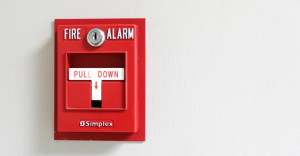Each home ought to have one fire extinguisher, situated in the kitchen. Better actually is to introduce fire extinguishers on each level of a house and in each conceivably risky territory, including (other than the kitchen) the garage, boiler room, and workshop.
Pick fire extinguishers by their size, class, and rating. “Size” alludes to the heaviness of the putting out fires synthetic, or charge, a fire extinguisher contains, and for the most part is about a large portion of the heaviness of the fire extinguisher itself. For customary private use, extinguishers more than two to five pounds in size ordinarily are sufficient; these range from five to ten pounds.
Class
“Class” alludes to the sorts of flames an extinguisher can put out. Class A extinguishers are for use on common burnable materials like wood, paper, and fabric. By and large, their charge comprises of carbonated water, which is cheap and sufficient for the assignment, however very risky whenever utilized against oil fires (the compressed water can spread the consuming oil) and electrical flames (the water stream and wetted surfaces can get zapped, conveying a potentially deadly stun).
Class B extinguishers are for use on combustible fluids, including oil, oil, fuel, and different synthetics. Normally their charge comprises of powdered sodium bicarbonate (preparing pop).
Class C extinguishers are for electrical flames. Most contain dry ammonium phosphate. Some Class C extinguishers contain halon gas, yet these are not for private use due to halon’s unfavorable impact on the world’s ozone layer.
Halon extinguishers are suggested for use around costly electronic items like PCs and TVs; the gas covers the fire, choking out it, and afterward dissipates without leaving substance buildup that can destroy electrical devices. Another benefit of halon is that it ventures into hard-to-arrive at zones and around hindrances, extinguishing fire in places different extinguishers can’t contact.
Rating
“Rating” is an estimation of a fire extinguisher’s viability on a given sort of fire. The higher the rating, the more successful the extinguisher is against the class of fire to which the rating is appointed.
As a matter of fact, the rating framework is somewhat more confounded: rating numbers appointed to a Class A extinguisher show the inexact gallons of water expected to coordinate with the extinguisher’s ability (for instance, a 1A rating demonstrates that the extinguisher capacities just as about a gallon of water), while numbers relegated to Class B extinguishers demonstrate the rough area of fire that can be doused by a normal nonprofessional client. Class C extinguishers convey no appraisals.
To learn more, we suggest reading this article on what each rating means
Size
For security on a whole floor of a house, purchase a moderately sized extinguisher; for instance, a model evaluated 3A:40B:C. These weigh around ten pounds and cost around $50. In a kitchen, pick a 5B:C unit; these weigh around three pounds and cost around $15.
For expanded kitchen security, it is most likely better to purchase two little extinguishers than a solitary bigger model. Kitchen fires as a rule start little and are effectively dealt with by a little extinguisher; more modest extinguishers are more reasonable than bigger ones, particularly in limited spaces; and, in light of the fact that even an incompletely utilized extinguisher should be re-energized to set it up for additional utilization or supplanted, having numerous little extinguishers bodes well.
A 5B:C extinguisher is likewise a decent decision for ensuring a garage or carport, where oil and oil fires are the best bet. For workshops, utility rooms, and comparable areas, acquire IA: lOB:C extinguishers. These, as well, weigh around three pounds (some weigh as much as five pounds) and cost around $15. In all cases, purchase just extinguishers recorded by Underwriters Laboratories.
Mounting
Mount fire extinguishers on display on dividers close to entryways or other potential departure areas. Use mounting sections made for the reason; these connect with long screws to divider studs and permit extinguishers to be immediately taken out. Rather than the plastic sections that accompany many fire extinguishers, consider the sturdier marine sections affirmed by the U.S. Coast Guard.
The right mounting stature for extinguishers is somewhere in the range of four and five feet over the floor, yet mount them as high as six feet if important to keep them out of the span of small kids. Try not to keep fire extinguishers in storage rooms or somewhere else far away; in a crisis they are probably going to be disregarded.
Charging
Purchase fire extinguishers that have pressure measures that empower you to check the state of the charge initially. Investigate the measure once every month; have an extinguisher re-energized where you got it or through your neighborhood local group of fire-fighters at whatever point the check shows it has lost pressing factor or after it has been utilized, regardless of whether just for a couple of moments.
Fire extinguishers that can’t be re-energized or have outlived their evaluated life length, which is imprinted on the name, should be thrown out. For no situation should you keep a fire extinguisher longer than ten years, paying little mind to the maker’s cases. Shockingly, re-energizing a more modest extinguisher frequently costs almost as much as supplanting it and may not reestablish the extinguisher to its unique condition.
Using
Everybody in the family aside from little youngsters should work on properly using a fire extinguisher to get familiar with the procedure in the event that a fire breaks out. A decent method to do this is to spread a huge sheet of plastic on the ground and use it as a test territory.
To work a fire extinguisher appropriately, stand six to ten feet from the fire with your back to the closest exit. Holding the extinguisher upright, pull the locking pin from the handle and point the spout at the base of the flares. At that point clear the spout from one side to another to cover the fire with retardant until the flares go out. Watch for flares to revive, and be set up to shower once more.


